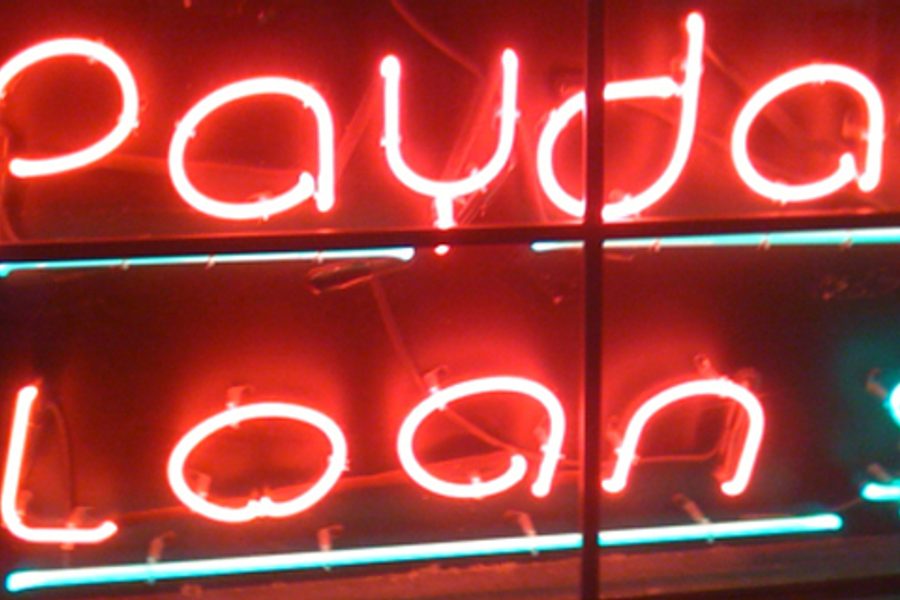
Every couple of weeks, American workers go through the collective ritual of bringing home a hard-earned paycheck. Many, however, won’t even have a chance to put that check in their pocket before it gets snatched away by companies that have turned robbing the poor into big business.
A new report by National People’s Action shows the cruel geography of payday lending — the main form of predatory lending that directly undercuts wages by roping them into an endless debt cycle. And it turns out that your risk of being besieged by a payday lender depends on the racial or ethnic composition of your neighborhood.
Payday loans are generally marketed as an advance on a future paycheck, to help people get by between paydays. The catch is that they’re typically saddled with huge interest rates that can pull the borrower deeper and deeper into debt as they scramble to pay off accumulating outstanding loans, which often leads to new loans, more debt, and so on. A typical payday loan, according to NPA, would be “up to $500 for two week or one month terms, at rates over twenty times that of credit cards.”
The NPA’s study focused on five metropolitan areas: Chicago, Peoria, Ill., Detroit, Kansas City, and St. Louis. Overall, when they cut the lending data by demographics, the NPA found that payday lenders were located “on average both nearest to high African-American and Latino populations, and the payday stores are most densely concentrated nearby these communities of color.”
So in areas with high black and Latino populations, your friendly neighborhood payday lender is conveniently located just a mile away on average; compared with a 3.5 mile distance in areas with the fewest blacks and Latinos.
These aren’t all sketchy fly-by-night loan sharks, either. According to NPA’s data, nearly forty percent of payday lending operations in the midwest study area were funded by big-name banks like Wells Fargo and Bank of America.
It’s true that the clustering of predatory lending stores in a neighborhood is just one of many socioeconomic factors driving people to take out bad loans, and the companies are to some extent responding to local demand for their services. But the demographic patterns indicate that payday lending, like their cousin the subprime mortgage, prey on the desperation of poor and “underbanked” communities where fairer loan products are simply unavailable.
The NPA analysis, which also looks at the disproportionate impacts of subprime lending to black and Latino homeowners, states that across the Midwest, many of the communities hardest hit by the financial crisis:
are now being abandoned by mainstream credit markets. Furthermore the working poor and fixed-income residents in communities of color are at continued risk of predatory, wealth-stripping credit through under-regulated subprime products as evidenced by the prevalence of high-cost cash advanced lending.
The news coming out of Wall Street suggests that the subprime implosion and financial meltdown have bottomed out, yet the debt trap keeps growing for the working poor in already disadvantaged neighborhoods. Even among those living paycheck to paycheck, the predatory lending system has still found ingenious ways to squeeze more money out of people with virtually nothing.
Michelle Chen is a contributing writer at In These Times and The Nation, a contributing editor at Dissent and a co-producer of the “Belabored” podcast. She studies history at the CUNY Graduate Center. She tweets at @meeshellchen.








